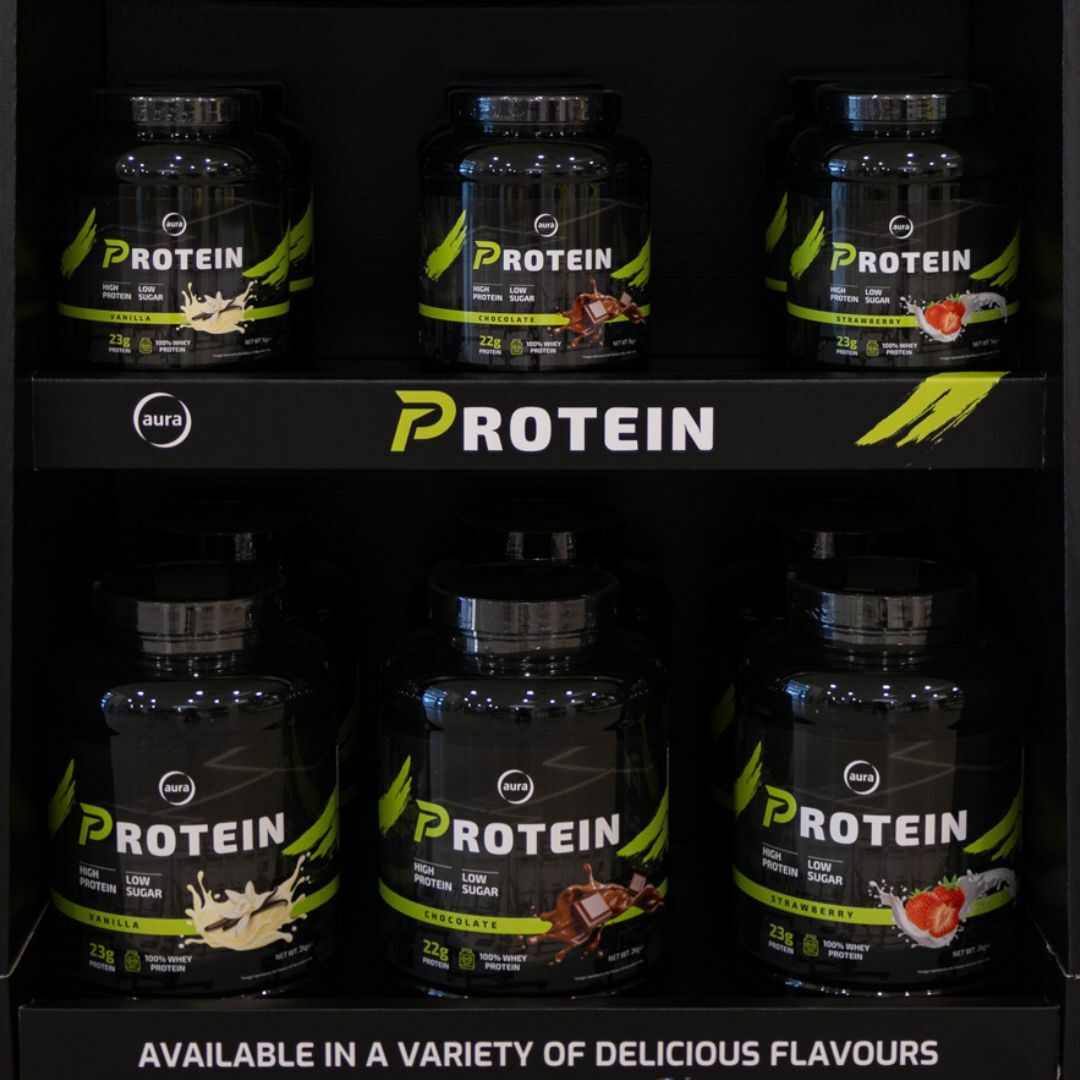We always hear about the importance of protein and how we need it in our diet. However, most people assume it’s only bodybuilders and weightlifters that should worry about their protein intake. The reality is, we all need protein and should be making sure we are getting the correct amount whether we work out every day or not, and this can be in the form of natural products or protein supplements. Afterall, protein is a macronutrient made up of amino acids which play many critical roles in the body, so ensuring we get our share should be a priority for us all.

The Importance of Amino Acids
Amino acids can be classified as essential and non-essential. Essential amino acids can be found in animal proteins such as beef, poultry, and eggs. Animal proteins are usually considered complete proteins because they contain all 9 essential amino acids. Some exceptions to this include plant food sources such as soy, quinoa, and buckwheat. While these plant food sources are considered complete, they may not be considered high in protein and would not be recommended as a sole protein source at mealtimes. It is important that we consume essential amino acids as our body cannot make them.
A Deep Dive Into Everyday Sources of Protein
Take a look at the tables below to see the protein content of common animal and plant protein sources. Each is displayed in portions using your hand as a guide, so no need to break out the kitchen scales for each one!
| Animal sources of protein | |
| Meats/Poultry/Seafood: Palm size (equivalent to 85-100g) | Protein content (g) per portion* |
| Chicken breast (grilled, without skin) | 30.00 |
| Pork chop/medallion (lean, grilled) | 20.00 |
| Beef steak (lean, grilled) | 30.00 |
| Salmon (grilled) | 20.00 |
| Tuna (1 tin in brine) | 27.00 |
| Prawns (cooked) | 21.00 |

| Animal sources of protein | ||
| Eggs/Dairy: | Portion size | Protein content (g) per portion* |
| Chicken egg | 1 whole boiled | 6.0 |
| Whole milk | 250ml glass | 8.5 |
| Semi-skimmed milk | 250ml glass | 9.0 |
| Cheddar cheese | Standard slice | 5.2 |
| Plain Greek-style 0% fat yogurt | 100g: small pot | 10.3 |
| Plain low-fat yogurt | 100g: small pot | 5.4 |

| Plant sources of protein | ||
| Pulses & Beans | Portion size | Protein content (g) per portion* |
| Red lentils (boiled) | 1 cup | 17.8 |
| Chickpeas (canned) | ½ 400g tin | 15.00 |
| Tofu (steamed) | ¼ block | 13.00 |
| Kidney beans (canned) | ½ 400g tin | 14.4 |
| Baked beans (canned) | ½ 400g tin | 8.00 |

| Plant sources of protein | ||
| Grains: | Portion size | Protein content (g) per portion* |
| Quinoa | ½ cup (85g) | 12 |
| Cous-Cous | ½ cup (85g) | 11 |
| Rice (uncooked) | 2 handfuls (75g) | 5.0 |
| Bread (brown) | 1 slice | 4.0 |
| Bread (white) | 1 slice | 3.5 |
| Pasta (uncooked) | 2 handfuls (75g) | 4.3 |
| Porridge oats | 40g | 4.4 |

| Plant sources of protein | ||
| Nuts: | Portion size | Protein content (g) per portion* |
| Almonds | 30g (1 handful) | 6.4 |
| Peanuts | 30g (1 handful) | 8.0 |
| Walnuts | 30g (1 handful) | 4.4 |
| Hazelnuts | 30g (1 handful) | 4.4 |
| Cashews | 30g (1 handful) | 5.0 |
| Almond Butter | 1 Tablespoon | 3.4 |
| Peanut Butter | 1 Tablespoon | 4.0 |
| Cashew Butter | 1 Tablespoon | 2.6 |

Why Do We Need Protein?
Protein is an important macronutrient because it contributes to the maintenance and growth of muscle mass, as well as the maintenance of normal bones. Does this information sound familiar? It might be because it’s commonly found on the packaging of foods that are a source of protein.
Did you know that muscle mass decreases as you age? In fact, Harvard Medical School reports that after the age of 30, a loss of 3-5% can occur per decade! This is why we are encouraged to include more protein in our diet as we age.

Whole food sources should make up majority of your dietary protein intake as they naturally include additional nutrients like essential vitamins, minerals and fiber. Opting for a high-quality protein supplement can be beneficial to bring up your protein intake if you frequently struggle to meet your requirements. While protein powders are not essential for muscle growth, they can be beneficial for those who need a quick protein addition to an already balanced diet.
Adding Protein Supplements to Your Diet
There are various types of protein supplements that can compliment your gym routine. In this blog we will focus on whey protein powders. Whey protein is derived from milk and can be delivered in 2 forms: whey concentrate and whey isolate. Whey is the by-product of the production of cheese and yoghurt. This is the liquid that you sometimes see in natural yoghurts when separation occurs; it’s completely normal and safe to eat.

Whey Isolate is considered easier to digest due to the lower amount of lactose which can be useful for those with a lactose sensitivity. However, it can be more expensive due the longer manufacture process.
Whey concentrate (whey protein) is a popular type of protein powder and can easily deliver a decent amount of protein per serving, depending on the brand.
Choosing the Right Protein Supplement for You
When choosing a protein supplement, there are 3 things that you should consider: Quality, Form, and Taste.
1. Quality:
The quality of your protein supplement should matter to you. The ingredients should be priority of your list. The protein content of the supplement can tell a lot about its composition and use of fillers and additives. There is no right or wrong when it comes to the amount of protein required for the supplement to be considered high quality. Generally, if you pay for a protein supplement, you expect it to deliver a significant amount of protein per serving. While all supplements vary, aiming for at least 20g per serving should ensure that you are getting a significant boost in your meal or snack.
2. Form:

What’s most convenient for you, a liquid or powder? There are benefits to both. Perhaps if you are somebody who enjoys adding a protein supplement to your foods (such as oats, coffee, yogurt etc.) you might find a powder more versatile. However, if you are somebody who is always on the go, a liquid form might be more convenient as it requires no preparation. Regardless of the form of supplement, it should deliver at least 20g of protein per serving. Remember that serving sizes may look different depending on the form of the supplement; when it comes to powder, this may be a scoop while a ready-made drink might come in a 330ml bottle.
3. Taste:
The taste of the supplement will be entirely subjective. My best advice here is trial and error until you find something you enjoy. If you like to add your protein powder to different foods, opting for a basic flavour like vanilla or chocolate might be a good idea. If you like to mix your powder with water, choosing fruity flavours might be a better option. If you find that your protein shake is too sweet or heavy when you mix it with milk, try out ‘no added sugar’ plant milks like almond, oat or hazelnut. Remember that the most expensive supplements aren’t always the best. Refer to the ingredients list to make an informed choice when choosing your supplement.
Check Out Aura’s New Fitness Nutrition Range

If you are considering supplementing your diet with a protein powder, why not try Aura’s brand-new whey protein powder now available in 1kg and 2kg tubs? One scoop delivers 22g of protein which can easily be added to any meal, smoothie or enjoyed on its own.

About Our Author

Julia is a personal trainer at Aura Leitrim, having graduated with a BSc in Public Health Nutrition from ATU Galway in November 2022. Throughout her four-years in college, she worked with various individuals to improve and educate their knowledge on nutrition, health and wellness. Julia is passionate about helping others understand the importance of a healthy balanced diet and how to make it fit into their lifestyle (and what it means for them)! Julia is currently awaiting her AfN Accreditation which will enable her to work as a Registered Nutritionist. She has a clear desire to help others reach their fitness goals stating “I love my job as a personal trainer at Aura Leitrim because I get to see the positive lifestyle changes in clients daily”. To find out more about Julia, you can follow her on Instagram where she shares healthy tips, recipes and more: @juliag_pt!


